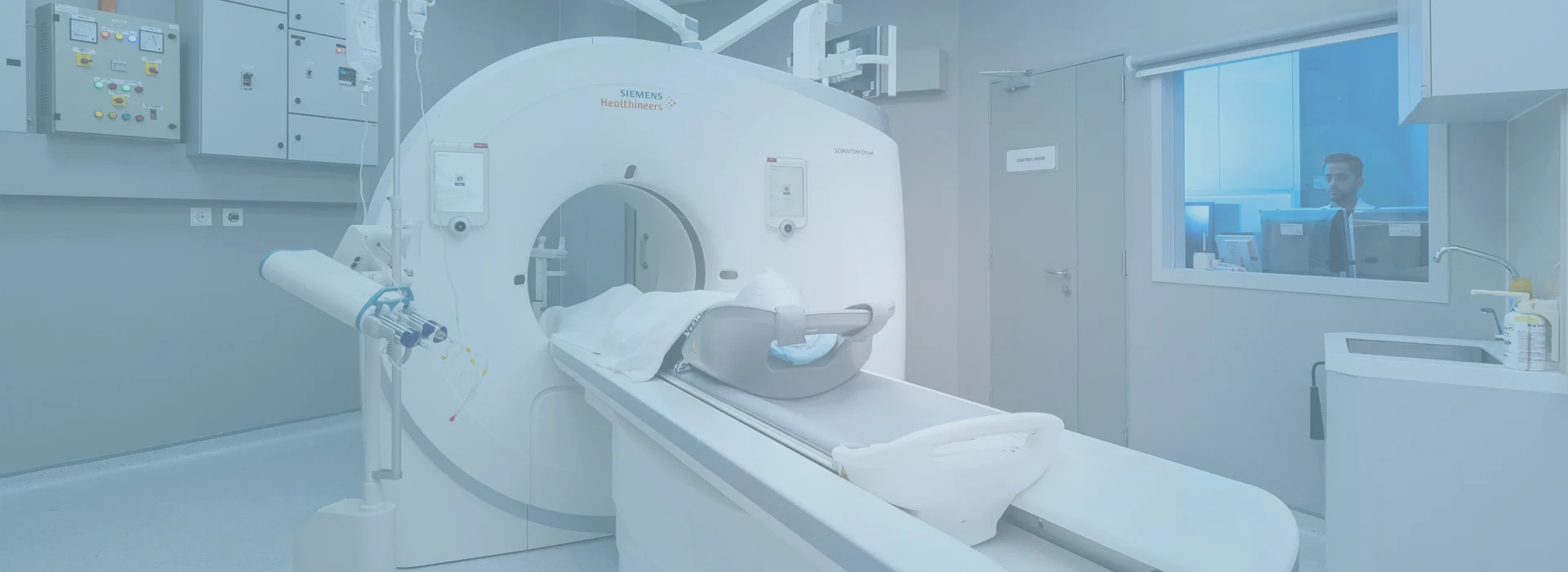
24 Jul Upper Respiratory Tract Infection (URTI): Symptoms and Treatments
Upper Respiratory Tract Infection (URTI): Symptoms and Treatments
By Island Hospital | July 24, 2024 12:00:00 PM
Medical Reviewer: Dr. Lem Li Khen, Respiratory Medicine Specialist
On average, children develop 6-8 Upper Respiratory Tract Infections (URTIs) a year, while adults usually have 2-4. Given how common it is, understanding this condition is crucial to improve your quality of life.
Knowing how to treat and manage URTIs can prevent the infection from worsening. Recognising when to seek medical help also reduces the risk of complications and ensures proper care – especially for vulnerable individuals like children and the elderly.
In this article, we will explore everything you need to know about URTIs, including the types, causes, risk factors, symptoms, treatments, and more!
What are URTIs?
Upper Respiratory Tract Infections (URTIs) is a group of viral infections that affect the upper part of the respiratory system, including the nose, throat, pharynx, and larynx.
Viruses cause most diseases, but bacteria can be the cause too. URTIs are very common and can be a real nuisance, adversely affecting your daily life and overall well-being.
These infections will usually go away on their own. However, to hasten the healing process and relieve symptoms, they can be treated with plenty of rest, lots of fluids, and pain relievers.
Types of URTIs
Here are a few types of URTIs:
1. Common Cold (Viral Rhinitis)
- The most common URTI is caused by many viruses, mainly rhinoviruses. It mainly affects the nasal passages and throat.
- Symptoms include: Sore throat, runny nose, nasal congestion, sneezing, cough, and mild fever.
2. Sinusitis
- Description: Inflammation or infection of the sinuses, air-filled spaces within the bones of the face.
- Symptoms include: Facial pain and pressure, nasal congestion, thick nasal discharge, loss of smell, and headache.
3. Pharyngitis
- Inflammation of the pharynx (throat), also known as a sore throat. It can be caused by viruses or bacteria like Streptococcus pyogenes (strep throat).
- Symptoms include: Sore throat, difficulty swallowing, red and swollen tonsils, fever, and swollen lymph nodes.
4. Laryngitis
- Inflammation of the larynx (voice box), often caused by viral infections, overuse of the voice, or irritation.
- Symptoms include: Hoarseness or loss of voice, sore throat, dry cough, and pain.
5. Epiglottitis
- A severe and life-threatening condition involving inflammation of the epiglottis, usually caused by bacterial infections like Haemophilus influenzae type b (Hib).
- Symptoms include: Severe sore throat, difficulty swallowing, drooling, hoarseness, and stridor (a harsh vibrating noise when breathing).
6. Tonsillitis
- Inflammation of the tonsils, often caused by viral or bacterial infections.
- Symptoms include: Sore throat, swollen and red tonsils, white or yellow coating on the tonsils, difficulty swallowing, and fever.
7. Influenza (Flu)
- A viral infection caused by influenza viruses affects the nose, throat, and sometimes the lungs. More severe than the common cold.
- Symptoms include: High fever, chills, muscle aches, fatigue, cough, sore throat, and runny or stuffy nose.
Respiratory infections can be dangerous for people with asthma, as they can worsen asthma symptoms or trigger attacks. Learn how to manage this condition in our asthma guide.
What Causes URTI?
URTIs are caused primarily by viruses. The usual suspects are rhinoviruses (common cold), influenza viruses (flu), and coronaviruses. They spread through droplets when an infected person coughs or sneezes and via surface contact.
Sometimes, URTIs are caused by bacteria. These are less common than a viral infection but can happen. After a viral infection weakens your body’s defences, bacterial URTIs can occur. Streptococcus pyogenes (strep throat) is an example of a bacterial cause of URTI.
Risk Factors
Several factors make you more likely to get a URTI:
- Age: Young children because their immune system is still developing and may contract it in school or daycare. Older people are also at risk because their immune system declines with age.
- Immunocompromised: People with chronic illness, HIV/AIDS, or chemotherapy are more infected.
- Environmental: Risk factors include pollution, tobacco smoke, and crowded living areas. Poor air quality and allergens irritate the respiratory tract, making the infection worse for patients.
- Seasonal: URTIs are more common in colder months (e.g., rainy season) when people are indoors and closer together, making it easier for viruses to spread.
Now that you’re well informed of these factors, take preventive measures to manage and reduce the risk of URTIs for you and your loved ones.
Symptoms of URTI
Here are a few early and advanced symptoms of URTIs.
Early Symptoms
URTIs start with mild symptoms that can be cold-like. These are:
- Sore Throat: One of the first signs of URTI is a sore or scratchy throat that hurts when you swallow or speak.
- Nasal Congestion: Blocked nose – can’t breathe through your nose.
- Runny Nose: Nasal discharge – lots of it, clear or slightly coloured.
Advanced Symptoms
As the infection progresses, symptoms can become more severe and may include:
- Cough: Persistent coughing as the body tries to clear the infection from your respiratory tract. Dry or productive cough – brings up mucus.
- Headache: Aches and pains – forehead and eyes.
- Fever: Mild to moderate fever as your body fights.
- Fatigue: Generally tired and weak – your body is working to infect.
More advanced symptoms could be a sign the infection is getting worse. Learn when to seek medical attention in this section.
Severity and Duration
Symptoms of URTI vary from person to person. Most of the time, they’re mild to moderate and last 7-10 days. However, some infections can last longer (up to 3 weeks) if complications occur or if you have underlying health issues.
Knowing these symptoms and how they progress will help you identify a URTI early and get the proper treatment. If anything, it will save you from lots of future pain and distress.
Diagnosing URTIs
URTIs are usually diagnosed through clinical exams and diagnostic tests.
Clinical Exam
Diagnosing an Upper Respiratory Tract Infection (URTI) starts with a clinical exam by a doctor. They’ll take your history – when, how long, and how severe. Among other things, they’ll ask about underlying health, and recently infected people you’ve been around.
During the exam, the doctor will:
- Look in your throat – Using a light, they’ll try to search for redness, swelling, or pus in your throat and tonsils.
- Check your nose – Nasal congestion and discharge.
- Listen to your lungs – Using a stethoscope to rule out lower respiratory tract infections like pneumonia.
Diagnostic Tests
Many URTIs can be diagnosed clinically, but in some cases, tests are needed to confirm or to know the real cause of the problem.
Some of the tests a doctor may recommend are:
- Throat Swabs: Mucus or secretions from your throat may be swabbed and tested for specific viruses or bacteria – like Streptococcus pyogenes (strep throat).
- Blood Tests: To see if it’s viral or bacterial – white blood cell counts and other infection markers.
- Imaging: If complications are suspected – sinusitis or pneumonia – X-rays or CT scans may be ordered to see how far the infection has spread.
Diagnosis is critical to the right treatment and ruling out other things that may cause similar symptoms so patients are prescribed the proper medication.
Treatments and Home Remedies
Treatments and remedies for URTIs are usually focused on managing the infection and relieving symptoms.
Medical Treatments
Managing URTIs is a combination of medical treatments for the cause of the infection:
- Antiviral meds: Antiviral drugs like oseltamivir (Tamiflu) may be prescribed if it’s a viral infection like flu. They’re most effective within 48 hours and can be given up to 5 days of symptoms surfacing.
- Antibiotics: Only if it’s a bacterial infection – like strep throat. Penicillin or amoxicillin may be prescribed.
- Over-the Counter (OTC) Medicines: To relieve symptoms and help you feel better. Here are a few examples:
- Decongestants – reduce nasal congestion and airflow. For example, pseudoephedrine and phenylephrine.
- Antihistamines – treat runny nose and sneezing (if allergies are involved).
- Pain relievers – manage fever, headache, and body aches. For example, ibuprofen or acetaminophen.
Home Remedies
1. Resting and staying hydrated
Rest helps your immune system fight. Drinking fluids keeps your throat moist and thins mucus, making coughing easier.
2. Using humidifiers
Add moisture to the air with a humidifier so mucous membranes don’t dry out and the throat doesn’t become irritated.
Be sure to follow medical advice, and use home remedies as add-ons.
Prevention
Here are some preventive methods to lower your risk of URTIs and improve overall well being.
Vaccination
Vaccination is critical to preventing some URTIs. The flu vaccine is for the most common and severe flu strains we encounter yearly.
Get vaccinated annually, and it will reduce your risk of contracting flu and the spread of flu to others.
Pneumococcal vaccines are for prevention of infections caused by Streptococcus pneumoniae. It is indicated in children, the elderly, and high risk patients.
Hygiene Practices
Good hygiene is critical to preventing URTIs. Here are a few to practise:
- Wash hands: Wash your hands with soap and water for 20 seconds. When soap and water are not available, use an alcohol-based hand sanitizer.
- Avoid people and places: Stay away from sick people and crowded places during peak season.
- Use tissues: Cover your mouth and nose with a tissue or elbow when you cough or sneeze and dispose of tissues properly.
Lifestyle Changes
A healthy lifestyle will strengthen your immune system and make you less likely to get infected. These are:
- Eat a healthy diet: Fruits, veggies, whole grains – all the nutrients your immune system needs are packed into these foods.
- Exercise regularly: Regular physical activity helps fortify your immune system.
- Get enough sleep: Sleep each night. Your body repairs and strengthens itself during rest. Nothing beats a good night’s sleep.
- Manage stress: Meditation, yoga, deep breathing – manage stress, and you’ll be more immune towards infections.
Complications
Most URTIs are mild and self-resolving but can cause complications in vulnerable individuals. These include:
- Sinusitis: Sinus inflammation and infection if nasal congestion and mucus don’t clear – sinus pain, pressure, and prolonged symptoms.
- Bronchitis: Infection spreads to the bronchi – inflammation – bronchitis (cough and mucus).
- Pneumonia: Serious complication – infection of the lungs – life-threatening in the elderly, young children, and the immunocompromised.
- Otitis media: Middle ear infection – common in children – ear pain and fever.
When to Seek Medical Attention
Monitor symptoms closely and see a doctor if you notice any of these signs or symptoms:
- Fever: High fever (above 38.5°C or 101.3°F) that doesn’t respond to fever reducers.
- Shortness of breath: Breathing difficulty, wheezing, or chest tightness not relieved by home remedies.
- Persistent or worsening symptoms: Symptoms that don’t get better or worsen after 7-10 days – secondary infection or complication.
- Severe headache or facial pain: Intense headache, facial pain, or swelling around eyes and forehead – sinusitis or complication.
- Ear pain: Severe or persistent ear pain – ear infection in children.
Knowing these signs and scheduling a doctor’s appointment immediately will help prevent complications and get the proper treatment. This means a faster recovery without suffering the severe symptoms of a URTI.
Special Considerations
As with most diseases, children and the elderly are at higher risk of URTIs. They often experience unique symptoms and complications that need special medical attention.
URTI in Children
Children are more prone to Upper Respiratory Tract Infections (URTIs) because of their still-developing immune systems. Plus, being in schools and daycare all day may expose them to other children and adults with the virus or bacteria.
When it comes to URTIs in children, here are a few of things to consider:
1. Symptoms unique to children
Irritability, loss of appetite, sleep, and ear pain (more so than adults because of the higher risk of ear infections).
2. Treatment for children
-
- Treatments are focused on symptom relief.
- Use OTC meds cautiously and only those labelled for children. Hydrate, rest, and use saline nasal drops or sprays.
- Do not give aspirin to children as there is a risk of Reye’s syndrome. However, it is essential to consult a doctor before taking any medication if in doubt.
URTI in the Elderly
The elderly are more susceptible to complications from URTIs because of their weak immune system and underlying health conditions. Here are some things to consider:
1. Complications
Pneumonia, bronchitis, and exacerbations of COPD or heart failure.
2. Prevention
Vaccines (flu and pneumococcal) are essential for older adults. Good nutrition, exercise, and management of existing health conditions will help fortify the immune system against infections in general.
3. Treatment
More cautious in the elderly, mainly if multiple medications are used for other conditions. Monitor for side effects and interactions with other meds.
An elderly patient with URTI should see a doctor, ideally before taking any medication, to ensure that they don’t consume something that may conflict with any existing medication for pre-existing conditions.
By considering the above for children and older adults, healthcare providers can make URTI management specific to those populations and reduce complications.
Relieve and Treat Your URTI with Island Hospital
Prevention through vaccination, hygiene, and lifestyle is the best way to avoid URTIs. Early symptoms and treatment will manage the infection, and reduce complications.
By staying vigilant and proactive, you can effectively manage and prevent URTIs, ensuring better health and well-being for yourself and your loved ones.
Do you have symptoms of URTI? Our Respiratory Physicians at Island Hospital are ready to help!
Our experienced consultants provide diagnosis and treatment for conditions affecting the respiratory system, which includes the nose, throat, larynx, windpipe, lungs and the diaphragm.
FAQ
1. What is the leading cause of URTI?
The leading cause of Upper Respiratory Tract Infections (URTIs) is viruses, including rhinoviruses, influenza viruses, and coronaviruses.
2. What is the best treatment for URTI?
The best treatment for a URTI involves rest, hydration, and symptomatic relief using over-the-counter medications like decongestants, antihistamines, and pain relievers.
In cases of bacterial infections, antibiotics may be prescribed by a healthcare provider.
3. What are the symptoms of a URTI?
Symptoms of a URTI include sore throat, nasal congestion, runny nose, cough, headache, fever, and fatigue. The severity and combination of symptoms can vary.
4. How to treat URTI?
URTIs can be treated with rest, plenty of fluids, and over-the-counter medications to relieve symptoms. Home remedies like the use of humidifiers can also help. In bacterial cases, antibiotics may be necessary.
5. How to prevent upper respiratory infection?
Preventing URTIs involves maintaining good hygiene. Here are a few habits to practise:
- Washing hands regularly.
- Avoiding close contact with sick individuals.
- Covering the mouth and nose when coughing or sneezing.
- Getting vaccinated (e.g., flu shot).
- Maintaining a healthy lifestyle.
6. Is URTI contagious?
Yes, URTIs are contagious. They spread through respiratory droplets when an infected person coughs or sneezes and through contact with contaminated surfaces.






